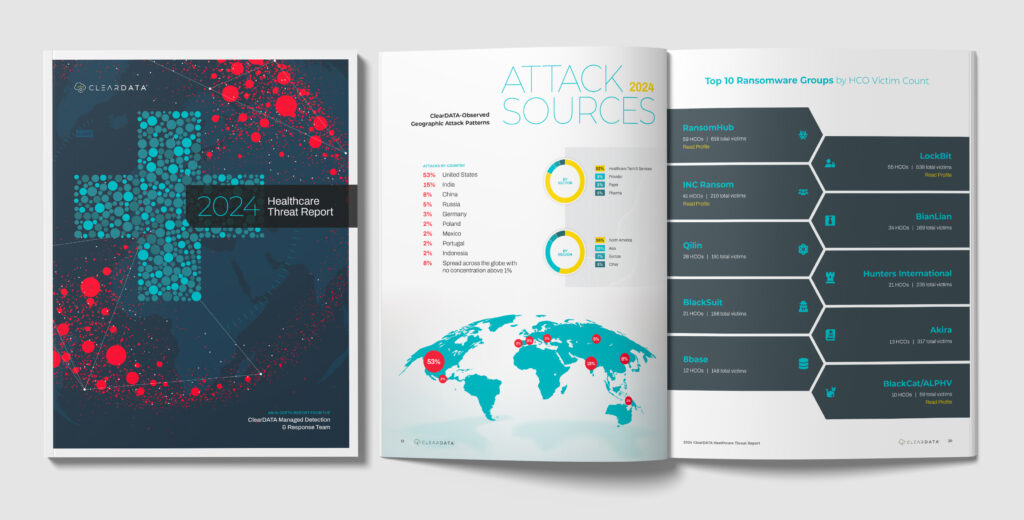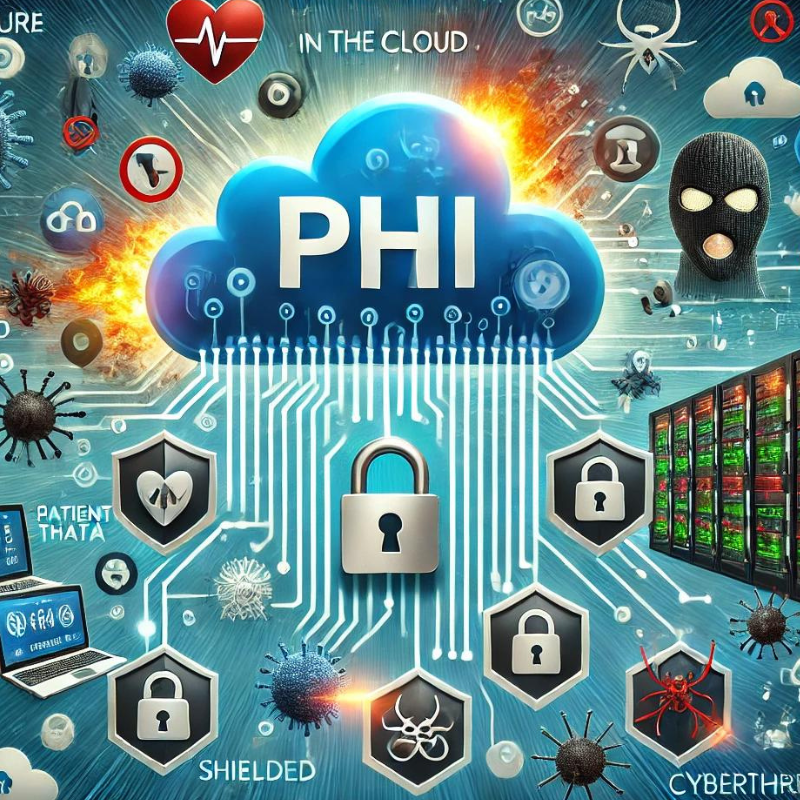Healthcare Data Breach Trends and Cyber Threats for 2025 and Beyond
The healthcare sector is at a critical juncture, navigating an increasingly hostile digital environment where cybercriminals leverage evolving techniques to exploit vulnerabilities. Data breaches in healthcare settings have risen steadily, threatening sensitive patient data and jeopardizing critical healthcare operations. The risks are real—both for patients whose personal health information (PHI) may be exposed, and for organizations struggling to maintain trust and compliant with stringent healthcare regulations.
The 2024 Healthcare Threat Report comprehensively analyzes these threats, uncovering trends and insights to help healthcare organizations fortify their defenses for the coming year. Below, we explore key takeaways from the report and highlight emerging cyber threats, vulnerabilities, and proactive solutions to address healthcare data breaches in 2025.
The Rising Costs of Healthcare Data Breaches
Healthcare data breaches continue to hit harder and more often than in any other industry. ClearDATA’s latest research reveals that ransomware attacks on healthcare organizations became even more aggressive in 2024.
The stakes are higher than ever with tactics like double extortion—where attackers not only encrypt data but steal it, threatening to leak sensitive information unless a ransom is paid. Add to that the increase in phishing and impersonation schemes, and it’s clear the threats are evolving fast. These attacks aren’t just about financial damage—they disrupt vital services and erode the trust that patients place in healthcare providers.
Wondering what this means for the future of healthcare security? Let’s dive into the report findings.
Emerging Trends in Healthcare Cyber Threats – 2025 and Beyond
To prepare for 2025, healthcare organizations must stay informed about emerging cyber threats and trends shaping the threat landscape. Below are some critical findings highlighted in ClearDATA’s 2024 Healthcare Threat Report.
AI-Driven Attacks and Defense Evasion
Threat actors increasingly leverage artificial intelligence (AI) and large language models (LLMs) to enhance their tactics. Advanced persistent threats (APTs) now deploy AI-enabled phishing campaigns featuring deepfake voice and video impersonations, making detection harder and attacks more convincing.
APT groups have also begun exploiting vulnerabilities more quickly by using AI to streamline the process of developing malware and bypassing defenses. This includes leveraging “live-off-the-land” tactics using legitimate software tools to evade detection. For example, ransomware groups like Ransomhub have utilized advanced EDR (endpoint detection and response) disablement tools to exfiltrate data undetected.
The Supply Chain is the New Target
An alarming shift toward targeting third-party vendors and open-source applications has emerged. Breaches such as the exploitation of Mirth Connect—an integration engine widely used across healthcare systems—illustrate how vulnerabilities in trusted software can grant attackers access to vast networks of sensitive data.
These supply chain attacks are particularly insidious because they bypass traditional security measures. Malicious actors infiltrate widely used software utilities upstream, embedding vulnerabilities that ripple across entire ecosystems when exploited.
Serverless and Cloud Infrastructure Vulnerabilities
As healthcare systems increasingly adopt serverless architectures, new risks arise surrounding misconfigurations, vulnerable APIs, and compromised access keys. Threat actors continue to exploit flaws in cloud environments and containerized workloads. For example, the exploitation of widely used platforms like Microsoft Azure Storage by ransomware groups to exfiltrate data reflects a growing sophistication in cloud-specific targeting.
The Proliferation of Ransomware-as-a-Service (RaaS)
Ransomware-as-a-Service models have surged in popularity, enabling even less experienced attackers to execute highly sophisticated attacks. ClearDATA identified over 1,300 unique ransomware campaigns in 2024 alone, with groups like RansomHub and LockBit leading the charge. These groups not only target healthcare organizations indiscriminately but also tailor their demands based on the financial standing or criticality of the victim organization.
Regulatory Pressures Adding Complexity
Healthcare organizations are expected to operate in compliance with stringent regulations, including HIPAA and the Health Care Cybersecurity Improvement Act of 2024. While these directives aim to improve resilience, they also add complexity, especially for smaller healthcare providers with limited resources. Falling short of compliance poses not only security risks but also costly penalties.
Addressing Vulnerabilities in 2025
Staying ahead in healthcare cybersecurity means combining smart tech solutions with operational excellence. Ready to tackle the next wave of data threats and stop costly breaches before they happen?
Here’s how organizations can stay protected and secure the future of patient care.
Proactive Supply Chain Management
Healthcare organizations must prioritize supply chain security by maintaining a comprehensive software bill of materials (SBOM). This visibility ensures timely identification of vulnerabilities in third-party applications. Incorporating Continuous Integration/Continuous Deployment (CI/CD) security practices can further minimize the risk of malicious code injection or supply chain compromises.
AI Augmentation for Defensive Capabilities
AI-assisted threat detection and remediation will be as crucial for defenders as for attackers. Leveraging AI for pattern recognition, anomaly detection, and predictive analysis can help organizations anticipate attacks before they occur. This must include policies defining the secure and ethical use of generative AI systems within organizational workflows.
Strengthening Cloud Security Posture
Given the rise in vulnerabilities across cloud and serverless environments, organizations should enforce strict access controls and implement runtime security measures for containerized workloads. Routine audits, active monitoring, and the use of cloud-native security tools are key to securing cloud-based healthcare data.
Adopting Zero Trust Architectures
Implementing a Zero Trust approach ensures that no entity—internal or external—is implicitly trusted. This involves continuous evaluation of user identities, devices, and activities to minimize unauthorized access and lateral movement. Multifactor Authentication (MFA) and network segmentation are foundational components of this approach.
Investing in Incident Response and Threat Intelligence
Incident response teams must be robust and well-equipped to quickly neutralize breaches. Intelligence-driven threat hunting can provide deep visibility into adversaries’ tactics, techniques, and procedures (TTPs), enabling precise, proactive defense strategies.
Preventing Healthcare Data Breachs in 2025
The 2024 Healthcare Threat Report demonstrates the measurable impact of proactive measures. For example, organizations partnering with ClearDATA in 2024 saw a 76% reduction in exploitable attack surfaces through threat intelligence and ongoing vulnerability management. These results underscore the importance of adopting a proactive and intelligence-driven defense strategy. By staying informed about emerging threats and investing in smart solutions, healthcare organizations can secure the future of patient care and protect against costly data breaches.
The frequency and sophistication of healthcare data breaches are only expected to increase in 2025. Organizations can’t afford a passive approach to security. Instead, they must actively engage with emerging trends, enhance their capabilities, and adopt intelligence-driven defenses to overcome the rising tide of cyber threats.
Don’t wait for a breach to act. Access the full 2024 Healthcare Threat Report today to gain actionable insights, benchmarking data, and expert recommendations for securing sensitive data and ensuring operational continuity in the face of emerging threats.
Stay vigilant, stay compliant, and stay one step ahead with ClearDATA.
📥 Download the report today.
FAQ
How can healthcare organizations prevent data breaches?
Healthcare organizations can prevent data breaches with a multi-layered security strategy. Key measures include adopting Zero Trust architecture, securing cloud environments with encryption and monitoring tools, conducting regular vulnerability assessments, and training staff on phishing awareness. Using MFA, strong password policies, and partnering with MDR services like ClearDATA ensures real-time threat detection and response. Incident response drills and threat intelligence integrations further enhance readiness against evolving cyber threats.
Why are healthcare providers targeted by cybercriminals?
Healthcare providers are prime targets for cybercriminals due to the value of electronic health records (EHRs) and patient data, which can be used for identity theft, fraud, or blackmail. Legacy systems, third-party software vulnerabilities, and limited IT budgets further increase their risk. Additionally, the reliance on data systems makes even minor breaches disruptive, often leading to quick ransom payments. These factors make the sector vulnerable to threats like ransomware and supply chain attacks.
What role does AI play in healthcare cybersecurity?
AI is transforming cybersecurity, serving both defenders and attackers. It helps organizations detect threats, analyze patterns, and automate tasks like log monitoring, while attackers use it for phishing, deepfakes, and advanced malware. Healthcare organizations must leverage AI-powered tools like ClearDATA’s Managed Detection and Response services to stay ahead of evolving threats.
What is the biggest cybersecurity challenge facing healthcare in 2025?
By 2025, healthcare will face growing cybersecurity threats, including advanced ransomware and supply chain attacks. Ransomware-as-a-Service (RaaS) lowers entry barriers for attackers, while vulnerabilities in third-party software and AI-driven large-scale attacks increase risks. Securing cloud systems, complying with new data regulations, and adopting Zero Trust principles will be crucial for defense. Healthcare providers must focus on intelligence-driven strategies and expert partnerships to stay protected.
How can small healthcare providers afford effective cybersecurity?
Small healthcare providers can enhance cybersecurity despite limited budgets through scalable solutions like managed service providers (MSPs) and cloud-native tools with built-in security. Key steps include implementing MFA, strong password policies, regular software updates, and employee training on phishing threats. Cost-effective investments in tools like EDR and proactive governance ensure robust protection without high costs.
Secure Your Healthcare Cloud



